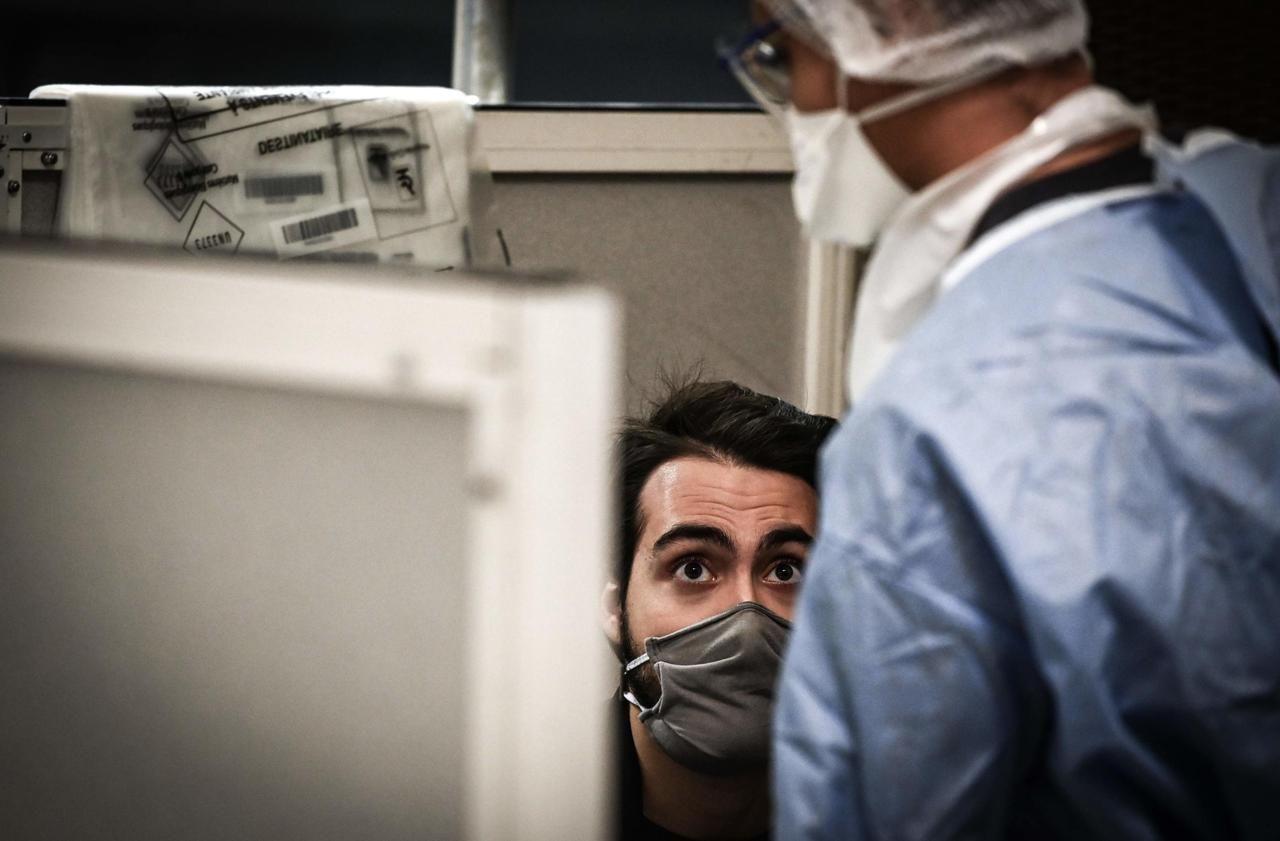Soaring incidence rates, an occupancy rate of Covid patients in intensive care which continues to rise, non-essential operations canceled… The Auvergne Rhône-Alpes region is facing a "worrying" situation due to the rebound in the Covid-19 epidemic, according to the terms of the Regional Health Authority (ARS).
"The rise of all indicators is accelerating," we warn on Monday.
Let's start with the situation in metropolitan areas, the areas most affected due to population density.
The four large ones in the region (Lyon, Grenoble, Saint-Etienne and Clermont-Ferrand) are in the top 6 of the French metropolises where the incidence rate is the highest.
Over the week of September 8 to 15, the most recent available, this rate reached 700 new cases per 100,000 inhabitants in Saint-Etienne, 542 in Lyon, 484 in Grenoble and 314 in Clermont-Ferrand.
Each time, the maximum alert threshold, 250, is largely exceeded.
The same applies only to people aged 65 and over.
The four metropolises in the region are this time in the top 5, again well above the maximum alert threshold (100) each time.
It is for this reason that the metropolises of Grenoble, Lyon, Saint-Etienne are among the eight where a curfew has been imposed at 9 p.m. every evening since Saturday.
That of Clermont-Ferrand, which exceeded the thresholds last Friday, could also pass very quickly.
"If this dynamic continues, restrictive measures could be considered there, in conjunction with local authorities and in consultation with elected officials," the Ministry of Health told the Parisian Friday evening, insisting on Monday that the situation " is being followed very closely ”.
Nearly 300 patients in intensive care
The situation in intensive care, the other indicator closely monitored, also worries the health authorities.
289 patients in serious condition due to Covid-19 were treated in the region this Sunday evening.
This is certainly much less than the peak of the first wave (783 beds occupied on April 6), but the curve has been rising continuously since the end of August.
During the two summer months, we stayed below 30. According to the latest data, 671 intensive care beds are open in the region.
The occupancy rate of Covid patients therefore reaches around 43% according to this calculation method.
“The situation is indeed problematic, we are on a tight rope.
The difference with the first wave is that the non-Covid activity now occupies more beds, since people continue to work, have road accidents, etc.
», Explains an anesthesiologist in the emergency room of the CHU de Lyon, who prefers to remain anonymous, having not asked his superiors for permission to speak.
Result: the Regional Health Authority asked Friday to "all public and private health establishments" in three sectors of the region to deprogram certain surgical operations from this Monday and for two weeks, in order to free up beds.
This represents about 25% of the acts usually performed.
A first at such a massive level during this second wave.
Newsletter - Most of the news
Every morning, the news seen by Le Parisien
I'm registering
Your email address is collected by Le Parisien to enable you to receive our news and commercial offers.
Learn more
“We only target functional surgeries (osteo-articular, non-urgent endoscopies, plastic, etc.), with no loss of opportunity for patients.
Outpatient surgery is preserved and encouraged and we are preserving urgent, cancer-related or life-saving surgeries for patients, ”indicates the Lyon anesthesiologist.
According to our information, the authorities should very quickly extend this device to other parts of the region.
Proof that the situation quickly deteriorated: barely a week ago, Jean-Yves Grall, regional director of the ARS, was delighted that there had been "no deprogramming".
Patient transfers for a week
For the past week, some patients have also been transferred from Saint-Etienne and Lyon hospitals to those of Clermont-Ferrand and Chambéry, which are currently less under pressure.
It is also because of these transfer possibilities that the authorities generally rely on the regional level to measure the number of Covid patients in intensive care, and therefore the occupancy rate.
READ ALSO>
Covid-19: when can we expect to see the effects of measures in the maximum alert zone?
But then, how to explain that the indicators deteriorate so much in Auvergne Rhône-Alpes, arousing particular vigilance on the part of the Ministry of Health?
As always, this question is very complicated to answer.
Moreover, the Lille metropolis and the Île-de-France have also been very affected in recent days.
“There are so many possible explanations: it would be necessary to be able to analyze in detail the state of health of the inhabitants, their age, etc.
“, We soberly indicate to the ARS.
The authorities are particularly worried about the fact that "the population has let their guard down a bit" in recent weeks.
Some directors of nursing homes or establishments have also reported that they saw many visitors "fall the mask in the rooms", and thus consider limiting again the authorized visits.
Hoping that the curfew will produce the first positive effects within "two or three weeks", regularly repeats the Minister of Health Olivier Véran.
VIDEO. Covid-19: curfew between 9 p.m. and 6 a.m. in Ile-de-France and in 8 metropolises, from Saturday











/cloudfront-eu-central-1.images.arcpublishing.com/prisa/S7ERVSCT4FUVX6R7TUVBDNTH5Y.jpg)



